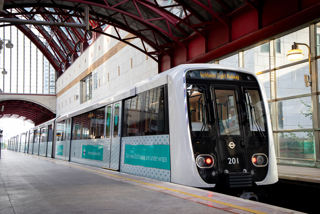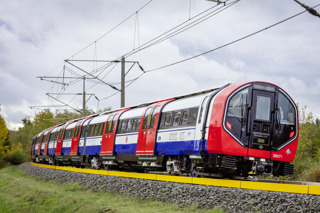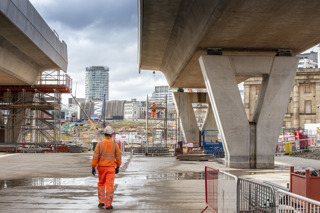RAIL 999 (with RAIL subscribers and available from newstands until January 10) sees our cloaked 'Industry Insider' delve into the possibilities, opportunities and outcomes that 2024's decision-making might yield - the good, the bad, and everything in-between.
Below is an excerpt from the article in copies of RAIL 999, out now...
For passengers and freight forwarders, the legacy of 2023 is the disruption caused by an inability to settle disputes about pay and conditions with staff employed by Network Rail (which was later resolved) and with the train operating companies. For the operators, there has been no freedom to find a negotiated settlement because of control exercised by the DfT - which is no doubt being leaned on by HM Treasury, which believe pay restraint is an essential tool in the reduction of inflation. Although strikes and overtime bans had a significant impact on revenue, which is now paid directly to the Treasury by train operators that are directly controlled by the DfT through the Operator of Last Resort mechanism or where the private sector holds contracts to run specified services, the inconvenience to passengers was less than in the past.
There is a better negotiating atmosphere, following the decision not to proceed with the widespread closure of ticket offices - including those at some of the busiest stations. This followed analysis by Transport Focus which made it clear that the proposals had not been the subject of sufficient stakeholder consultation and ignored the expectation of many passengers intending to use the railway.
Strike action has a clear impact, but the effect of an overtime ban is highly variable. The normal timetable was operating when a return trip was taken using LNER between Peterborough and Leeds during the overtime ban, which suggests that the traincrew complement is sufficient without dependence on overtime working. But the connecting Thameslink services were shambolic. As a starting point, the frequency between Peterborough and Horsham was reduced to half, and controllers struggled to keep even that going. Various options were tried, such as diverting services to King’s Cross and even terminating short at Alexandra Palace, where there is a connection to the London Underground Piccadilly Line. Late evening services were seriously disrupted, and short-notice bus services had to be provided to allow passengers to travel home after the working day. It cannot be right that five years after the Thameslink timetable meltdown in 2018, there remain insufficient traincrew to operate the services without recourse to overtime. The recent period of strike action was the last before the Minimum Services Legislation comes into force, which requires train operators to provide 40% of their services on designated routes. The big question is: will ASLEF provoke a confrontation by calling new strike days, for which it has a mandate from the membership?
Read the complete article by our Industry Insider in copies of RAIL 999, out now!
Never miss an update again with our weekly newsletter. Get the latest news, opinions and more from the UK rail industry, in a convenient format, straight to your inbox!


















Login to comment
Comments
No comments have been made yet.